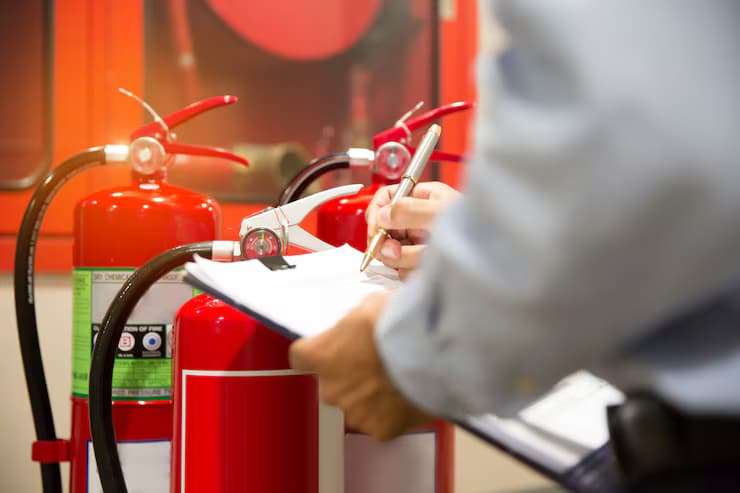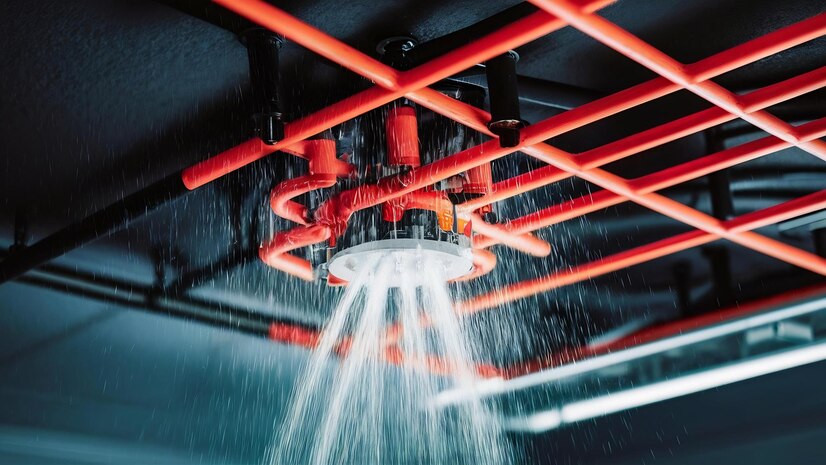How Often Should Fire Extinguishers Be Serviced? A Complete Guide

Strong 8k brings an ultra-HD IPTV experience to your living room and your pocket.
Fire extinguishers are a crucial component of fire safety in residential, commercial, and industrial settings. Simply having a fire extinguisher is not enough; regular servicing ensures that it remains functional and ready for use during an emergency. Understanding the servicing schedule and requirements helps maintain safety standards and prevents potential fire hazards.
Why Fire Extinguisher Servicing Is Necessary
1. Ensuring Proper Functionality
Over time, fire extinguishers may experience wear and tear, pressure loss, or chemical degradation. Regular servicing helps ensure that they remain in working condition and function effectively when needed.
2. Compliance with Fire Safety Regulations
Regulatory bodies require fire extinguishers to be inspected and maintained at regular intervals. Following these guidelines helps meet legal requirements and ensures compliance with fire safety codes.
3. Preventing Malfunction
A damaged or expired fire extinguisher can fail to operate properly during a fire emergency. Routine servicing helps detect potential issues before they lead to equipment failure.
4. Extending Equipment Lifespan
Proper maintenance and servicing help extend the life of fire extinguishers, ensuring they provide long-term protection and reducing the need for premature replacements.
Fire Extinguisher Servicing Schedule
Fire extinguishers should be serviced at different intervals based on usage, location, and type. Below is a recommended servicing schedule:
1. Monthly Inspections
A quick visual check should be conducted every month to ensure that fire extinguishers are in good condition and ready for use. The inspection should include:
Checking for visible signs of damage, rust, or leaks
Ensuring the pressure gauge is in the correct range
Verifying that the safety pin is intact
Ensuring the extinguisher is easily accessible and not obstructed
2. Annual Professional Servicing
At least once a year, a certified fire safety professional should conduct a thorough inspection and servicing of fire extinguishers. This includes:
Checking the internal condition of the extinguisher
Verifying pressure levels and refilling if necessary
Replacing worn-out parts such as hoses, seals, or valves
Cleaning and testing the unit to ensure it functions properly
3. Hydrostatic Testing
Fire extinguishers must undergo hydrostatic testing at specific intervals to check for leaks and structural integrity. The frequency of testing depends on the extinguisher type:
Water, Foam, and CO2 Extinguishers – Every 5 years
Dry Chemical Extinguishers – Every 12 years
During this process, the extinguisher is subjected to high-pressure testing to ensure it can withstand operational stress. Units that fail the test must be replaced.
4. Replacement of Expired Extinguishers
Most fire extinguishers have a lifespan of 10-15 years. Even with regular servicing, aging extinguishers should be replaced to ensure reliability. The expiration date should be checked regularly, and outdated units should be decommissioned properly.
Key Steps in Fire Extinguisher Servicing
1. Visual Inspection
A technician inspects the exterior for dents, corrosion, leaks, or physical damage. The labels and usage instructions should remain legible.
2. Pressure Level Check
The pressure gauge should indicate that the extinguisher is within the correct operating range. Low pressure can render it ineffective, while over-pressurization can cause hazards.
3. Internal Inspection
For certain extinguishers, a more detailed internal check is performed to ensure the extinguishing agent remains effective and free of contamination.
4. Nozzle and Hose Examination
Blocked, cracked, or deteriorated hoses and nozzles must be cleaned or replaced to ensure proper discharge functionality.
5. Refilling and Recharging
If an extinguisher has been partially used or has lost pressure over time, it must be refilled or recharged to restore its full capacity.
6. Tamper Seal and Pin Verification
The safety pin and tamper seal should be intact to prevent accidental discharge or tampering. If broken, they should be replaced immediately.
7. Functionality Testing
Some fire extinguishers may require discharge testing to verify that they work correctly. This is especially important for units used in high-risk environments.
8. Documentation and Record Keeping
Each servicing session should be logged to maintain a record of inspections, maintenance, and replacements. This is essential for compliance and tracking performance over time.
Consequences of Neglecting Fire Extinguisher Servicing
1. Equipment Failure in an Emergency
A neglected fire extinguisher may fail to operate when needed, increasing the risk of property damage, injury, or loss of life.
2. Legal and Financial Penalties
Failure to adhere to fire safety regulations can lead to fines, legal action, or liability in case of fire-related incidents.
3. Increased Fire Risk
A non-functional extinguisher can allow small fires to escalate into major disasters, putting lives and assets at risk.
4. Voided Insurance Claims
Many insurance policies require proof of regular fire extinguisher servicing. Neglecting maintenance may void claims in case of fire-related damages.
Tips for Maintaining Fire Extinguishers Between Services
Ensure easy accessibility – Fire extinguishers should be placed in visible and reachable locations.
Conduct quick self-checks – Perform monthly visual inspections to spot issues early.
Train personnel on usage – Educating employees or household members on proper extinguisher use improves emergency preparedness.
Store in appropriate conditions – Avoid exposing fire extinguishers to extreme temperatures or moisture, which can affect performance.
Conclusion
Regular Fire extinguisher service is essential for ensuring they remain functional, compliant with regulations, and ready for emergencies. Monthly inspections, annual professional servicing, and periodic hydrostatic testing help maintain reliability and effectiveness. Neglecting servicing can lead to equipment failure, legal consequences, and increased fire risks. By adhering to a proper maintenance schedule, individuals and businesses can enhance fire safety and protect lives and property. Prioritizing fire extinguisher servicing ensures that these critical fire protection devices are always in optimal working condition.
Note: IndiBlogHub features both user-submitted and editorial content. We do not verify third-party contributions. Read our Disclaimer and Privacy Policyfor details.



